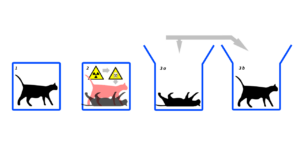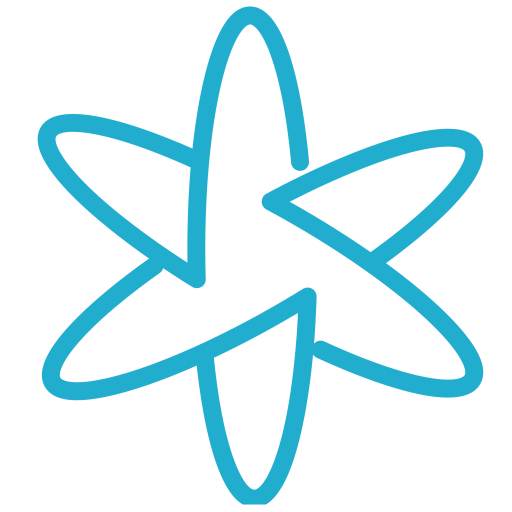If you understood the primary architecture of your computer, you would know that a bit is the basic unit of information in such digital devices. In simple terms, qubit (or quantum bit) is the basic unit of information in quantum technology. In today’s computing, information is encoded in bits, and these bits could be either ZERO (0) or ONE (1). Away from traditional computing, things are different. In quantum technology, information is encoded in qubit. Coined by American theoretical physicist Benjamin Schumacher in 1993, qubit is a two-level quantum system with states denoted as│0⟩ and │1⟩.
What is a Qubit made out of?
It is made from a number of particles like photons or electrons. These particles are used to represent 0 and/or 1; they are capable of breaking the rules of today’s computers. Hence, quantum technology comes with a different set of computing rules. The implication is that the world will use a new array of devices that are extremely fast and efficient. While the two generations of devices share some similarities, forward-looking computers differ from traditional computers because they can exhibit features like superposition, enlargement and interference.
Properties of Qubit
Qubits exhibit three major properties as discussed below.
- Superposition: Let’s look at superposition with a simple analogy. If your regular computer wants to solve a problem, it looks at every possible corridor, including dead ends, until it is able to arrive at the solution. But quantum technology tries all the best possible pathways simultaneously until it figures out the shortest route. Hence, they are extremely fast and efficient. This ability to exist in multiple states at the same time while trying to figure out how to solve a problem (in the example above) is known as superposition. Each qubit could undertake 2^n, where n represents the number of qubits used. It may comprise 500 qubits; this implies 2^500 calculations in just a single step – something today’s devices cannot do. By and large, experts achieve superposition using precision lasers or microwave beams. In simple terms, its possible to be off and on at the same time, somewhat hard for us to comprehend when living in a classical world. A famous experiment illustrates this strange event called Schrödinger’s cat

- Entanglement: When pairs or groups of particles cannot be described independently, these particles are said to be entangled. If this happens, the entangled qubits have a single quantum state. Measuring one qubit culminates in having the same impact of others in the system. Also, changing the state of one qubit results in change in state of other particles in a predictable way. This means that you can get information from either of them by measuring one, regardless of the distance between them. The knowledge of quantum entanglement is important because changing the speed of one qubit will alter the speed of its pair. In the end, it improves the processing speed of the device. Most notably, entanglement enables tasks like superdense coding, cryptography, and teleportation.

- Interference: Here, interference means that elementary particles can be in more than one place at the same time and that other individual particles can leave their paths and obstruct the direction of others. The moment interference takes place, the outcome is often a reinforced or diminished system. With interference, tech experts can bias the measurement of qubits to a desired state or states. This property is increasingly applied in superconducting quantum interference devices (SQUID), cryptography, and quantum computing.
What Does a Qubit Look Like?
You may be wondering: “What is a qubit made from?” To better understand what qubit is made from and what it looks like, you need to know the types. Well, this section will discuss the most common types. Depending on the type, it will have a different composition, feel and look, assuming we could easily see one.
- Spin: More often than not, quantum particles behave like little magnets. When they are in the spin orientation, they appear to be pointing upward or downward, but never in between. This enables physicists and tech gurus to build the spin qubit. It is also called spin-orbit, where the particles have electric field, magnetic field, or a combination of the two.
- Trapped atoms and ions: Another form that qubits can exist in is the energy levels of electrons in neutral atoms or ions. When they are in their natural state, they often occupy the lowest energy levels. However, by using lasers, they can also be ‘excited’ to a much higher energy level. Once that is achieved, it becomes pretty easy to assign qubit values to their energy states.
- Quantum dot qubits: These are nanoparticles consisting of semiconductor materials, such cadmium sulfide, silicon, or indium arsenide. It is designed as an isolated spherical volume and located inside a solid with a free electron locked inside of it. It also has layers of semiconducting materials. This can be used to build quantum devices.
- Photons: Photons exhibit neither mass nor charge. As a result, they don’t interact with each other. More importantly, they exist in several forms:
- Polarization: This is a phenomenon where each photon has its magnetic field with a definite direction. The states used to define qubit in this instance are horizontal and vertical polarization.
- Path: The path of a photon is another way of defining qubits. This is a result of superposition. The path mostly exists in two states, top path (0) or bottom path (1).
- Time Qubit: Last but not least, experts build photon qubits with its time of arrival. To make this happen, the concept of superposition is used. This is achieved by creating a superposition of photons that arrived early with those that arrived late. For instance, photons that arrived early could be assigned 0, while those that arrived late have 1.
- Superconducting Circuits: This is a very common type of qubit material. When they are at a low temperature, superconductors allow current to flow through them without resistance. You see, experts can even redesign an electric build to act as qubit by applying the concept of superconducting materials. To design a superconducting qubit, you need to assign a value to the direction that current flows around the circuit. For example, Google’s Sycamore is made of transmon superconducting material of 54 qubits. It is often shown with a lollipop moving round a sphere and a stick suspended in the center. Similarly, IBM’s Quantum is made from superconducting materials such as niobium and aluminum, with patterns of silicon substrate.
